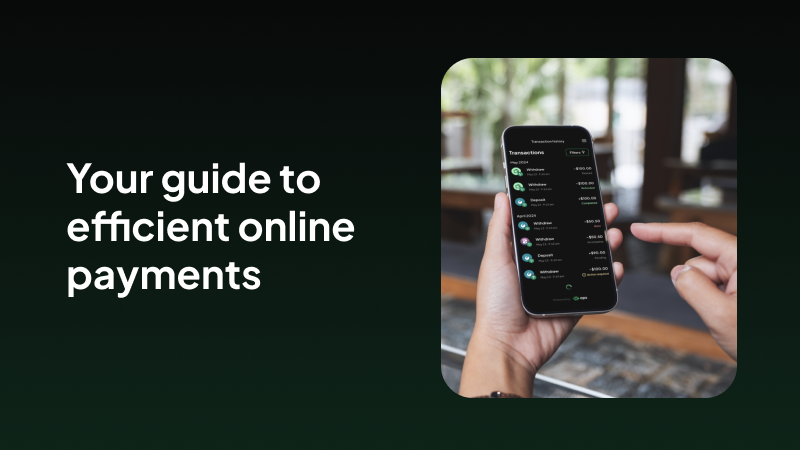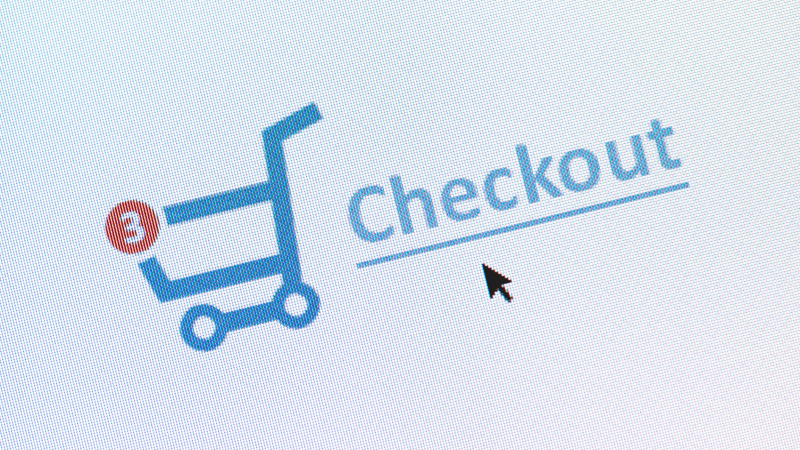Whether you’re a seasoned entrepreneur taking your brick-and-mortar store virtual, or a budding creative launching your services online, a crucial question arises: how will you receive payment?
Payments for online businesses are the lifeblood of your operation. A secure, user-friendly payment system is just as important as your product or service. If the checkout process is complex, customers might give up and leave. In this comprehensive guide, we’ll demystify the world of online payments for business.
We’ll walk you through the various options. You’ll learn how to choose the right platform for your specific needs, navigate the world of payment gateways, and ensure your transactions are secure and trustworthy.
By the end of this guide, you’ll have learned how to set up a smooth and efficient payment system for your online business, paving the way for a successful and profitable venture.
Choosing the right e-commerce platform: The foundation for online businesses
Selecting the right e-commerce platform is more than just picking a way to process payments for your online business. It’s the foundation upon which your entire online sales operation rests. This platform goes beyond facilitating transactions; it shapes the customer journey from initial browsing to final checkout. The chosen platform can transform data from a mere operational byproduct into a strategic asset. Think real-time decision-making, enhanced customer experiences, and faster innovation – all within a secure and compliant environment.
So, what factors should you consider when choosing your e-commerce platform? Here are a few key points to keep in mind:
Consider all-in-one solutions
Your platform needs to support all aspects of your business, including features for inventory management, product listings, order processing, customer relationship management (CRM), and analytics capabilities.
Does your platform scale?
As your business grows and attracts more customers, your platform should be able to scale seamlessly. Seek a solution that manages increased traffic and sales without impacting performance or user experience.
Price vs. value: is it worth it?
Consider the total cost of ownership, including the platform’s pricing structure, any associated transaction fees, and the potential cost of additional features or services you may need later.
Ease of use
A user-friendly platform is essential for you and your team. An intuitive interface and easy-to-use tools will allow you to manage your online store efficiently and effectively.
Compatibility with other solutions
Ensure the platform integrates with critical systems, such as your accounting software, payment gateways, marketing automation tools, and customer service platforms.
Building vs. existing platforms
Now that you understand the importance of choosing the right platform, let’s explore the options: building your own custom platform or using an existing, established solution.
Building your platform allows for maximum customization and control. However, it may be expensive and time-consuming to develop and maintain. You’ll need a team of skilled developers to build, manage, and maintain, which may drain your resources.
Utilizing an existing e-commerce platform is more cost-effective and quicker to set up. Many established platforms offer robust features and functionalities, often with user-friendly interfaces and many integrations. The downside is that you may have less flexibility to match your brand identity.
Payment service provider (PSP) – the bridge to secure online payments for business
Now that you’ve selected the foundation for your online business with the right e-commerce platform, it’s time to consider online payments for business. A crucial component of any successful online store is a secure and reliable PSP. But what exactly is a PSP, and how does it fit into the online transaction process?
A PSP is a secure intermediary that facilitates communication between your online store, your customers, and their banks. When customers reach the checkout stage, they enter their payment information. The PSP then collects, encrypts, and verifies this sensitive data, ensuring its accuracy before authorizing and processing the payment.
How does a PSP work?
It acts as the bridge between the customer, the merchant (you), and the bank involved in the transaction. Here’s a breakdown of the process:
- Customer checkout: A client enters their payment information during checkout.
- PSP: The PSP securely captures and sends the encrypted credit card data to the payment processor.
- Payment processing: The PSP verifies the information with the issuing bank and transfers funds from the customer’s account to yours.
- Communication and notification: After processing the transaction, the PSP communicates the approval or decline status to you and the customer.
What are the key features to consider when choosing a PSP?
Here are a few top priorities when selecting your payments partner:
- Security – Look for a gateway that adheres to the highest security standards, including PCI compliance, to ensure customer data is always protected.
- Fees – PSPs typically charge transaction fees, among other fees, so transparency in pricing is crucial. Choose a PSP with a clear fee structure.
- Supported payment methods – Ensure your chosen PSP supports popular payment methods like card processing, alternative payments, and digital wallets.
- Integrations – A seamless integration between your PSP and your e-commerce platform is essential for a smooth checkout experience.
- Customer support – Reliable customer support is invaluable should you encounter any issues with your PSP.
Obtaining a merchant account. Do you really need one?
A merchant account is essential for any business accepting card payments. It securely transfers funds from your customers to your business.
When a customer makes a purchase using their card, the merchant account communicates with the customer’s card issuer to verify the transaction. Once approved, the account deducts the purchase amount from the customer’s card and credits your business bank account.
Obtaining a merchant account involves a formal application process. You’ll need to provide information about your business, including its legal structure, tax identification number (EIN), and bank account details. Your eligibility depends on your business type, location, and credit history.
Learn more about merchant accounts in our comprehensive guide.
Now, there’s an alternative to traditional merchant accounts, PSPs. Unlike merchant accounts, PSPs often combine multiple merchants under a single account, simplifying the payment process. Small businesses or startups have an easier time with a streamlined setup and fewer service providers.
Choosing the right payment options for your online business
We’ve explored the essential components of online payment processing – PSPs. Now, let’s shift our focus to the very heart of the transaction: the payment methods themselves. Offering many payment options for your online business goes beyond convenience, as it will impact your sales and profits.
Why is offering multiple payment methods important?
It boils down to customer satisfaction and conversion rates. Offering preferred payment methods enhances the shopping experience and increases client conversions. Imagine a customer reaching the checkout stage, ready to buy, only to discover their preferred payment method isn’t available. Disappointment and cart abandonment are likely outcomes. Offering a variety of options ensures a smoother transaction flow and happier customers.
Before settling on the payment options, consider your target market, business type, and transaction fees.
- Understanding your customers’ demographics and purchasing habits is crucial. Are they tech-savvy mobile users who prefer digital wallets? Or a more traditional audience comfortable with cards?
- The nature of your business can influence payment method selection. Subscription services may benefit from recurring billing options, while high-value purchases require secure solutions.
- Choose a balanced approach that offers customer convenience without significantly impacting your profit margins.
So, what are the popular payment methods to consider for your online business?
| Payment method | Description | Key points |
|---|---|---|
| Credit and debit cards | Dominant in online payments, offering familiarity and convenience | Support major networks like Visa and MasterCard |
| Digital wallets | Popular with mobile shoppers for speed and security of one-click payments
Can hold digital currencies |
Increases the types of currencies clients can use on your platform |
| Alternative payments | Useful for targeting specific markets and product types, offering local payment solutions in emerging regions like APAC and MENA | Provides local solutions for businesses in emerging markets |
Find out more about alternative payments for online businesses in our detailed article.
Streamlining your online checkout process
Let’s turn to a crucial stage in the customer journey: the checkout process. A streamlined checkout experience can have a dramatic impact on your sales. It’s the last step before customers complete their purchase.
With the right strategies, you can enhance your checkout process and create a more efficient and enjoyable customer experience. Here are actionable steps:
- The checkout form should be concise and ask only for essential information. For speed and convenience, offer a guest checkout option.
- Provide clear instructions and progress indicators to guide customers through the checkout process. Display security badges and a variety of accepted payment methods to build trust.
- Offer simplified shipping options and avoid hidden fees. Consider offering free shipping above a certain purchase threshold.
- Ensure your checkout page is mobile-responsive and easy to navigate on smartphones.
There’s more to the checkout process than just reducing steps. Consider implementing strategies to recover abandoned carts. Automated emails can encourage customers to complete their forgotten purchases. Another effective strategy for recovering lost sales is to use exit-intent pop-ups that offer discounts or promotions.
Explore our deep dive into streamlining your checkout process for all online businesses.
And with that, you’ll have a clear path to setting up payments for online businesses. To crown it off, consider a reliable payment partner in APS.
FAQs
What are the best payment methods for online businesses?
The best options include credit cards, digital wallets, bank transfers, and alternative payments. Choose methods that suit your audience’s preferences and location.
How do online payments for businesses work?
Online payments use secure gateways to process customer transactions. Funds move from their account to your business account via encrypted digital networks.
Why are payment options important for online businesses?
Offering multiple payment options boosts convenience, attracts global customers, and reduces cart abandonment, ultimately increasing sales and improving customer satisfaction.
Sources




